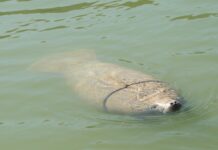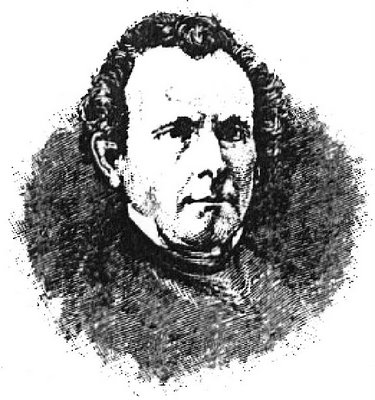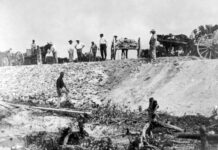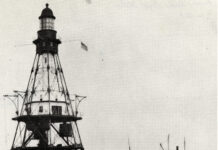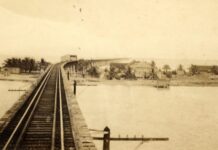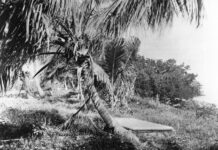No journey down the Key Lime Pie Hole is complete without a good crust discussion, so today we will introduce an ingredient that is a must for so many Key lime pie crusts. She came from a good religious family and was raised to suppress self-stimulation brought on by lustful desires, but over time she turned to the dark side. Today, she is sultry, sweet and has earned a place of legend in Key lime pie history: the sinfully delicious Graham cracker.
The Graham cracker was named after Presbyterian minister and dietary reformer Sylvester Graham. Born in 1794, Sylvester was a sickly child and became a minister in his late 20s as he searched for a spiritual cure. Graham was ahead of his time in many ways. He was an early promoter of vegetarianism and one of the first people to connect poor health with stress. He also preached the importance of circumcision and believed that masturbating would lead to blindness and death.
Graham had a strong following, and when he released his 1834 paper, On Self-Pollution, it sparked a masturbation scare across America. In order to suppress sexual desires, Graham promoted a strict diet that included a special bread made with coarsely ground wheat flour. As the popularity of his diet grew, it led to the creation of crackers that bore the Graham name. In 1898, the National Biscuit Company (Nabisco) brought the Graham cracker to mass production, but it would take a few decades and the emergence of The Pie King before the crumbs took a starring role in Key lime pie.
The Pie King was born in San Diego in 1901. Monroe Boston Strause was making a name for himself with pies by the time he was 16 and joined his uncle’s wholesale pie business soon after. Advances in oven technology at the time had led to a cake boom, but Strause remained a die-hard pie guy. He dedicated his life to creating new pies, advancing pie-making techniques, and touring the country hosting pie clinics where he shared his vast knowledge with other bakers. His dedication earned him the title of Pie King, and in 1928, Strause’s crowning achievement was his invention of chiffon pie. The pie was so light and delicate that it required a different base than the usual pastry crust. Strause’s mother suggested Graham crackers, and after a little tinkering, the famous crust was born.
Ads mentioning Graham flour in Key West go back at least as far as 1908. Pastry pie crusts certainly existed at the same time, so it is possible that both were used in early undocumented versions of Key lime pie. Historian Tom Hambright, and some multi-generation Conchs with whom I’ve talked pie, tell stories of locals creating a slurry of crushed Uneeda Biscuits and water to make early Key lime pie crusts. The Uneeda biscuit was introduced in 1901, making it yet another early crust contender.
Though Key lime pie probably originated with local sponge fishermen in the late 1800s, the first known published recipe appeared on page 14 of the Miami Herald on Saturday, April 15, 1933. It was submitted by Mrs. Mabel McClanahan of 313 William Street in Key West, and included eggs, lime juice, condensed milk, meringue, and a crust made of … Graham crackers. It’s a Key lime pie through and through, but McClanahan called it a “Tropical Chiffon Lime Pie.” The name leaves little doubt that her recipe took a local treat and amped it up with a little crust inspiration from The Pie King.
It’s a revelation that is sure to fuel the raging fire of Key lime pie crust debates. It pinpoints a date for the crumb crust’s introduction and scores a solid point for Team Graham Cracker. But claiming a recipe didn’t exist before it was published in a paper is pretzel logic, so my advice to Team Pastry members who are up in arms is: don’t let it rub you the wrong way. And if it does, just eat a slice of Key lime pie with a crust made of tasty Graham crackers. After all, they were created to stop unnecessary rubbing.
Love & Limes.
Mabel McClanahan’s Tropical Chiffon Lime Pie
(As it appeared in the Miami Herald, 1933)
Mix thoroughly:
1 can condensed milk
¼ cup evaporated milk
3 egg yellows
1/3 cup lime juice, strained:
Butter 9-inch pie tin heavily. Sprinkle graham cracker crumbs about one-fourth inch thick for crust, pressing crumbs well up on sides of pan. Pour in uncooked custard and cover with meringue, using three egg whites and three scant tablespoons of sugar. Brown in moderate oven and allow to set for one hour before serving. Serves six.




